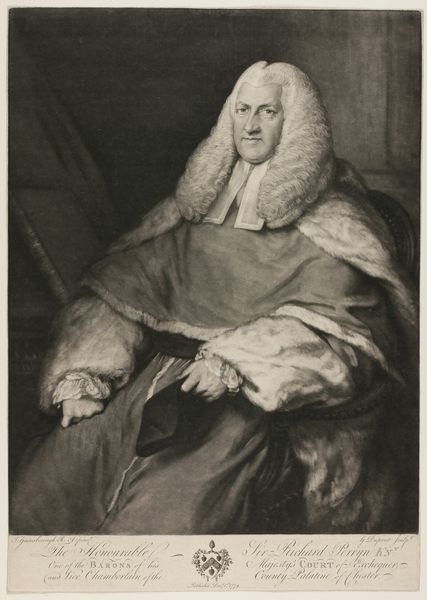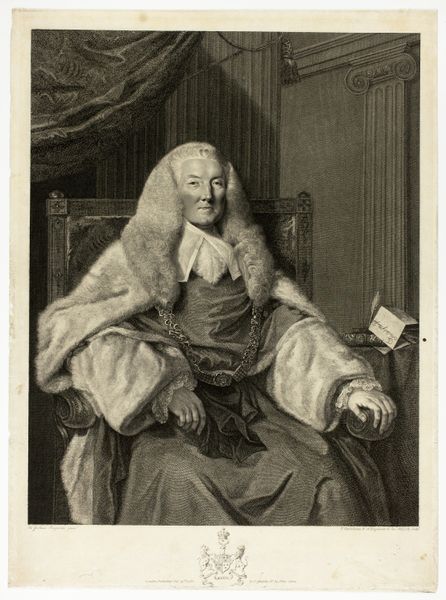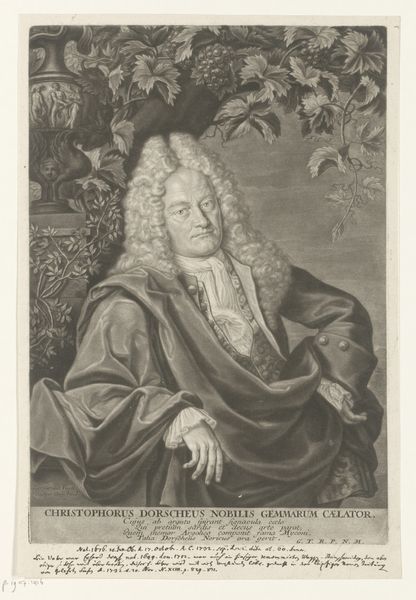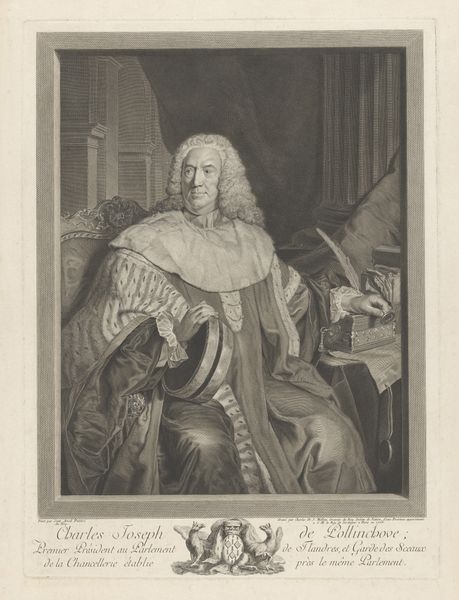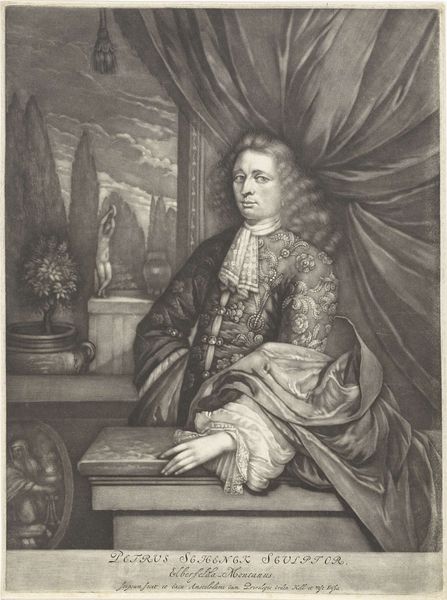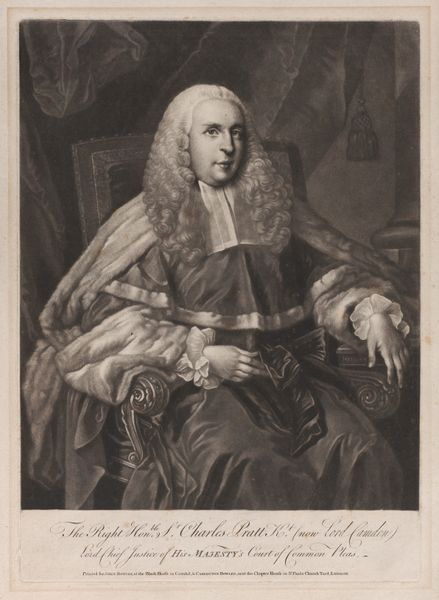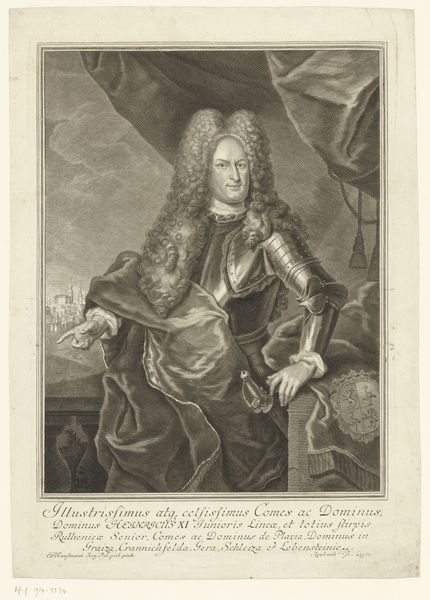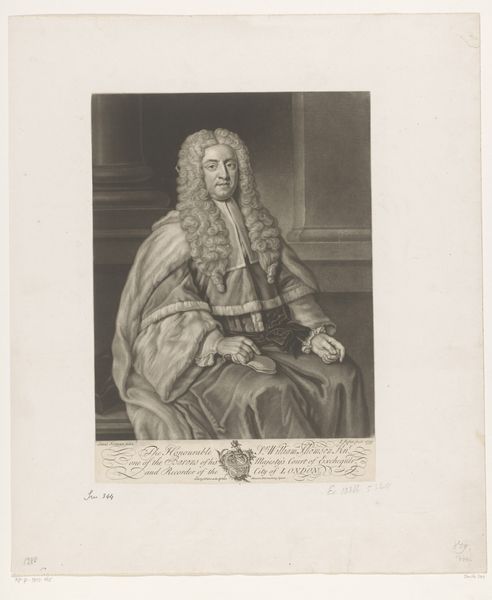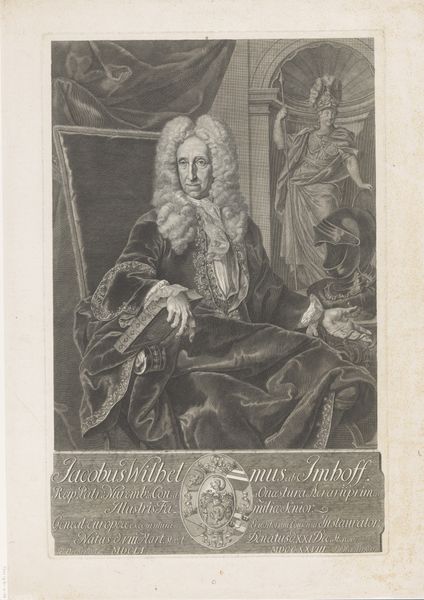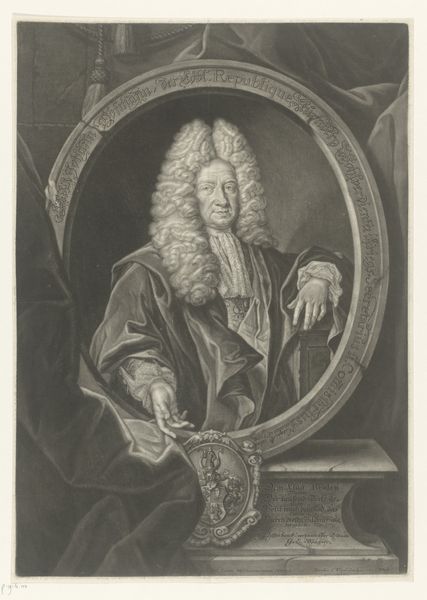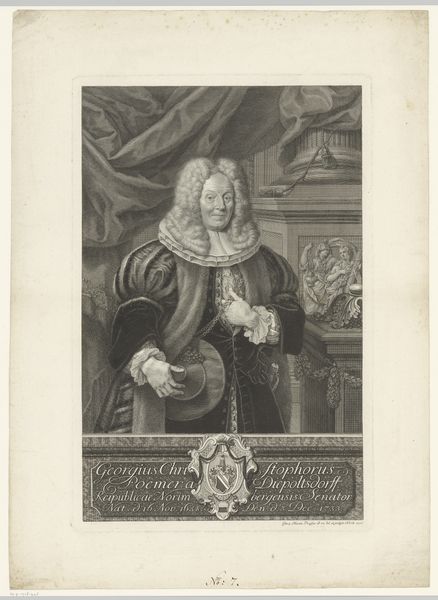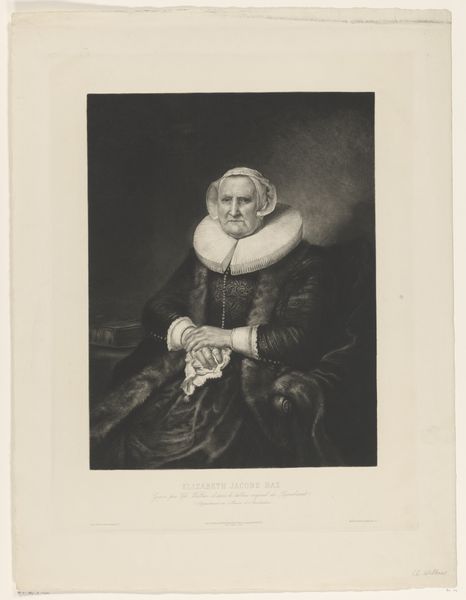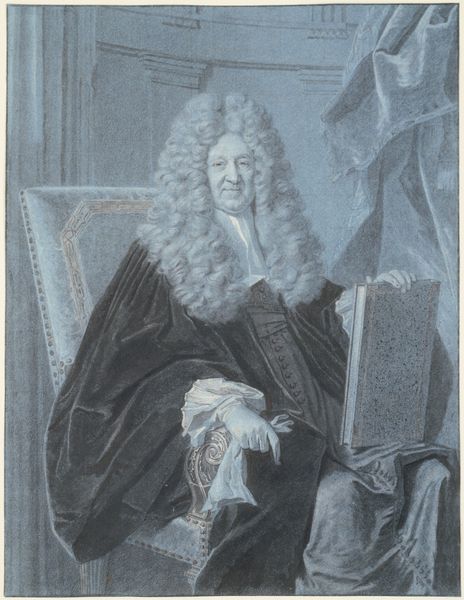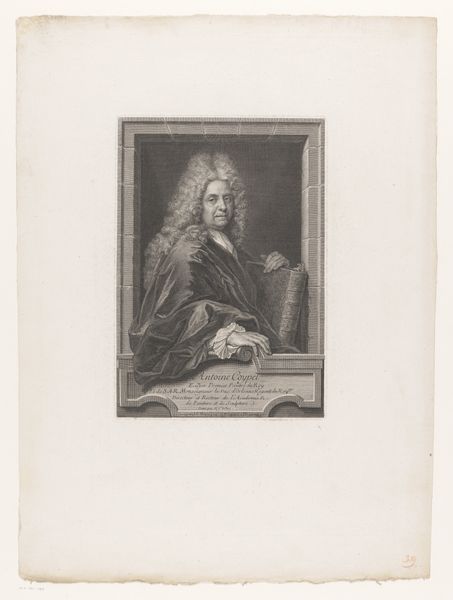
engraving
#
portrait
#
neoclacissism
#
history-painting
#
academic-art
#
engraving
Copyright: Public domain
Editor: This is "The Honorable Sir Henry Gould," an engraving made in 1794 by Thomas Hardy. The density of the image, with its meticulous details, makes for an imposing portrait. I am immediately drawn to the dramatic contrast between the light of his wig and the shadowy background. What stands out to you in this piece? Curator: The engraving utilizes a formal composition characteristic of its period. Note how Hardy employs chiaroscuro not only to highlight Sir Henry's features but also to emphasize the textures of his judicial robes. The formal arrangement—the subject centrally placed, the deliberate posture, and the symbolic accessories like the quill and book—all construct a visual vocabulary that speaks to authority and erudition. Do you observe the relationship between the textures? Editor: Yes, the smoothness of his face set against the fur trim of his robes creates a very tactile contrast. The lines in the background look almost blurred when compared to those detailing Sir Henry's face. What could that contrast be intended to convey? Curator: We can decode the contrasting texture through structuralism. The blurred lines can emphasize depth while also highlighting that it is Henry himself that is most important. Note also how his right hand occupies a higher portion of the picture than his face. Is the viewer meant to view Gould first or what he represents as Justice first? Hardy constructs a system of signs through the artwork’s internal relationships, reflecting Enlightenment ideals of order and reason within the social hierarchy. Editor: That makes a lot of sense when viewed with this framework in mind. I originally assumed his garments held the greatest importance due to the contrast with the darker colors behind them. I now realize it can be viewed through relationships between details, rather than by colors alone. Thank you! Curator: Indeed. By isolating formal elements and studying their arrangement, a portrait not only represents but actively performs power. An astute observation of texture!
Comments
No comments
Be the first to comment and join the conversation on the ultimate creative platform.
